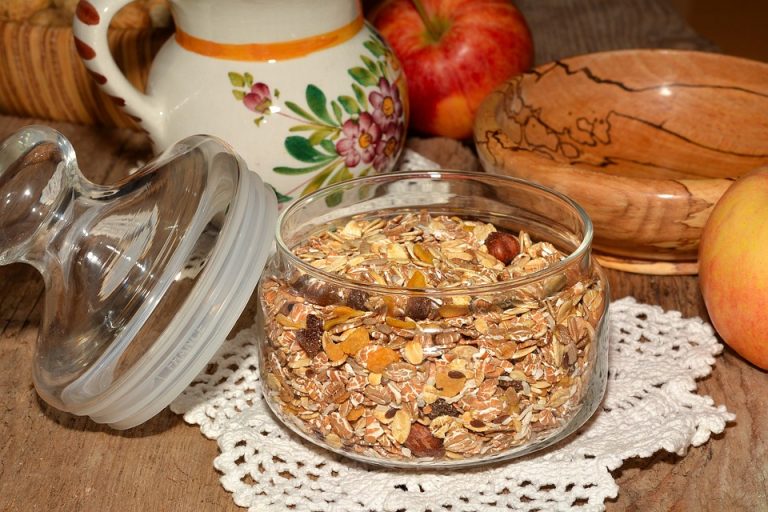Contents
- morning routine to lower a1c — What It Is And Why It Matters
- 7 Simple Morning Routine To Lower A1C
- 1. Drink A Glass Of Water Right Away
- 2. Check Your Glucose And Reflect
- 3. Move Your Body For 15–30 Minutes
- 4. Eat A Protein-Forward Breakfast
- 5. Take Medications And Supplements Consistently
- 6. Manage Stress With A Short Ritual
- 7. Plan Your Meals And Snacks For The Day
- Small Tweaks That Add Up
- What Science Actually Says
- How To Make This Stick Without Losing Your Mind
- When To Contact Your Clinician
- Bottom Line
- FAQ
morning routine to lower a1c — What It Is And Why It Matters
morning routine to lower a1c means the small, specific actions you do first thing that nudge your body toward better blood sugar control. It’s not a miracle; it’s a disciplined, kind series of moves you can start today that add up to meaningful drops in your A1C. If your numbers worry you, this matters because mornings set the tone for glucose, appetite, medication response, and stress — all the things that push your A1C up or pull it down.
You’ve tried diets and promises. This is different. These are humble habits that respect your life and your schedule. They’re rooted in research from diabetes experts and practical, everyday experience that works.
7 Simple Morning Routine To Lower A1C
Below are seven steps you can do in sequence, no fancy gear, no perfect willpower. They’re designed so a real person — you — can follow them tomorrow morning and see the difference over weeks.
1. Drink A Glass Of Water Right Away
Start with water. Your body wakes thirsty. A cold glass first thing can reduce morning cravings and blunt the urge to reach for sugary drinks. Hydration helps kidneys clear excess glucose, and studies link regular hydration with better glycemic control. Make this a ritual: one full glass before you touch your phone.
If you take medications, water helps them absorb predictably. Keep a bottle on your nightstand if mornings are rushed. It’s a tiny action with steady payoffs.
2. Check Your Glucose And Reflect
Do a quick glucose check. The number is data — not a verdict. Write it down. Look for patterns: fasting highs, steady lows, or unpredictable swings. Recording trends is one of the fastest ways to lower your A1C because it forces small, immediate course corrections.
If readings are off, pause. Ask: Did I eat late? Did I skip a pill? Did I sleep badly? Answering those questions shapes better next-day choices. Reliable data builds confidence and trust between you and your care team.
3. Move Your Body For 15–30 Minutes
A short, brisk walk or a home routine lowers blood sugar quickly after waking. Exercise increases insulin sensitivity, which helps your cells use glucose more efficiently, and repeated sessions reduce A1C over time. Pick something you like — brisk walking, cycling, stair climbing, or a guided program on your phone.
Keep sessions consistent. Fifteen minutes counts if you do it daily. Add strength moves twice a week to protect muscle, which is a big player in glucose metabolism. Movement is the single most effective morning tool you’ll use.
4. Eat A Protein-Forward Breakfast
Swap pastries for protein. Eggs, Greek yogurt, cottage cheese, or a smoothie with protein powder slows sugar spikes and keeps you full longer. Protein stabilizes morning glucose and prevents the mid-morning crash that leads to poor choices.
Include fiber — berries, nuts, or oats — and a little healthy fat like avocado or olive oil. This combination keeps glucose steady and helps lower A1C when repeated day after day.
5. Take Medications And Supplements Consistently
If your doctor prescribed medication, take it the same way every morning. Consistency matters more than timing details. Skipping doses or taking them erratically creates chaos for your A1C. If you use supplements like vitamin D or magnesium, mention them to your clinician, because some have evidence for helping insulin sensitivity.
Set a non-negotiable cue. For example, take pills right after your water and glucose check. Habits built on a chain of cues are the ones that stick.
6. Manage Stress With A Short Ritual
Stress spikes cortisol and blood sugar. Ten minutes of breathing, a short meditation, or simple stretching quiets your nervous system and lowers morning glycemic volatility. Mindfulness practices are linked to better glucose control in multiple studies and are especially good in the morning when cortisol is naturally higher.
Make this non-negotiable. Even three deep breaths before you get out of bed counts. The goal is calm momentum, not perfection.
7. Plan Your Meals And Snacks For The Day
Spend five minutes planning. What will you eat for lunch? Where will snacks come from? Planning prevents decision fatigue and avoids the blood-sugar-damaging grabs that happen when you’re hungry and rushed. Pack portions, choose fiber-rich options, and keep carb counts in mind.
Plan for real life — meetings, travel, family demands. A little structure in the morning prevents big sugar swings later. Consistent day-to-day choices drive down A1C more than heroic dieting binges.
Small Tweaks That Add Up
These seven steps aren’t isolated. They reinforce each other. Hydration improves medication absorption. Movement reduces cravings. Protein stabilizes glucose after exercise. When you string these habits together, the compound effect is powerful.
Start with just two habits if that’s all you can manage: water and a walk. Build from there. Consistency breeds results; small wins build momentum and lower your A1C slowly and sustainably.
What Science Actually Says
Clinical evidence supports morning activity and consistent meals for glucose control, and long-term studies show lifestyle changes reduce average A1C. The Diabetes Prevention Program and other research demonstrate that modest, sustained changes in activity and diet lower diabetes risk and improve glycemic markers. Experts at the American Diabetes Association recommend individualized routines but consistently emphasize regular physical activity, weight management, and consistent medication use.
If you want specifics, read about the benefits of morning exercise at the Harvard Health blog and glucose management guidance at the CDC website. These are practical, science-backed sources that align with the routines I’m describing.
How To Make This Stick Without Losing Your Mind
The secret is architecture, not willpower. Rearrange your morning so success is the default.
- Put the water glass on your nightstand.
- Lay out your exercise clothes before bed.
- Pre-portion a protein breakfast the night before.
- Keep a simple log on your phone for glucose checks.
These are tiny environmental nudges that remove friction. Habit change is boring in the beginning and then it becomes your safety net.
When To Contact Your Clinician
If morning readings remain high despite these changes, call your care team. Persistent fasting highs, unexpected lows, or symptoms like blurred vision or extreme thirst need professional attention. Use your morning log as evidence. Clinicians respond to consistent data; it helps them adjust meds or recommend tests.
Don’t wait months. Early adjustments protect you from complications and keep your life moving forward.
Bottom Line
Bottom Line: A focused, steady morning routine to lower a1c is within reach. Start with water, a glucose check, 15–30 minutes of movement, a protein-forward breakfast, consistent meds, a short stress ritual, and simple meal planning. These steps are practical, science-informed, and built for real lives. Do them daily and you will see a change in your A1C over weeks. Promise.
You don’t need to overhaul everything. You just need to start this morning.
— — —
FAQ
Can A Morning Routine Really Lower My A1C?
Yes. Consistent morning habits like exercise, proper medication, and a protein-rich breakfast reduce glucose swings and improve insulin sensitivity. When repeated daily, these changes lower average blood sugar measured by A1C.
How Soon Will I See Results?
A1C reflects average glucose over roughly three months, so meaningful changes usually show up in 6–12 weeks. However, you’ll notice better day-to-day readings and more stable energy within days to weeks.
What If I’m Too Busy In The Morning?
Do small, repeatable actions: one glass of water, a 10–15 minute walk, a simple protein snack. Start tiny. Habit architecture — prepping clothes, breakfasts, and logs — makes it possible even on the busiest days.
Should I Change My Medication Timing?
Talk to your clinician before changing medication timing. What helps one person could hurt another. Use your morning log to show patterns and ask for guidance about timing or dose adjustments.
Are Supplements Helpful?
Some supplements can support blood sugar control for certain people, but evidence is mixed and interactions matter. Bring any supplements to your clinician’s attention before starting them.
— — —
References
-
The Centers for Disease Control and Prevention provides practical guidance on diabetes management and prevention that supports morning activity and consistent routines (http://www.cdc.gov/diabetes).
-
The American Diabetes Association offers evidence-based recommendations on lifestyle management and medication adherence to improve A1C and long-term outcomes (http://www.diabetes.org).
-
The New England Journal of Medicine published significant findings from the Diabetes Prevention Program showing lifestyle change reduces diabetes risk and improves glucose measures (http://www.nejm.org).
-
Harvard Health discusses the benefits of morning exercise and how it impacts blood sugar and overall metabolic health (http://www.health.harvard.edu).
-
National Institutes of Health/National Library of Medicine hosts peer-reviewed studies on insulin sensitivity, exercise, and meal composition influencing A1C (http://www.ncbi.nlm.nih.gov).








